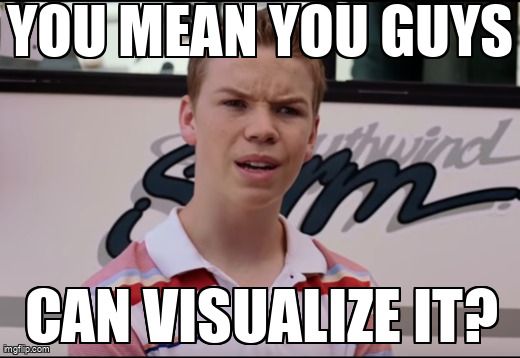Have you ever found yourself eager to start a new exercise routine or crush your fitness goals, only for your motivation to ghost you faster than Casper? You aren't alone! Some days, lacing up your shoes feels harder than the workout itself — so how do you find that fire when your training demands more than usual?
Whether you're deep in marathon training or grinding through tough CrossFit workouts, the exercise routine might be hard, but staying motivated doesn't have to be!
 Photo by Brett Jordan on Unsplash
Photo by Brett Jordan on UnsplashRemember Your "Why"
Whether you're training intensely for a personal goal — like running a marathon — or taking on a new challenge like CrossFit, staying connected to your “why” will help you keep going, even when it gets tough.
If you're looking for more ways to make it stick, try writing it down on a Post-It note and keeping it somewhere visible or updating your phone's wallpaper. This helps you stay accountable and keeps motivation to exercise top of mind.

Ask yourself: "What made me start this journey?" Maybe it was a health scare, a desire for more energy, or the drive to feel proud of achieving something big. Whatever your reason, write it down in one sentence. If you're looking for more motivation to exercise, check out 10 ChatGPT Prompt Templates That Help You With Your Workout Plans.
When I ran my first half marathon, my only goal was to finish — and avoid ending up in the medical tent. I did it! The phrase that kept me going was: “Forward is forward, no matter the pace.” I first heard this phrase when it was the slogan for To Write Love on Her Arms' virtual 5K race. It has powered many of my runs since.
Make it Bite Sized
Rome wasn’t built in a day — and neither is motivation to exercise. Instead of trying to overhaul your entire routine at once, shift your focus to small, sustainable habits. These habits are what will carry you forward when your motivation dips. If starting feels overwhelming, you're not alone!
When I started training for my first half marathon, I kept it simple: commit to just ten minutes of movement. Most days, I’d run for ten minutes — and often, I’d feel good enough to keep going. But if I felt worse by the end of those ten minutes, I’d listen to my body and stop.
That small commitment made showing up feel doable — and over time, it built the foundation for something much bigger. I went on to achieve a personal best in my most recent half marathon — I never would have been able to do this if I'd stopped running when my motivation wore off!

You don’t have to run a marathon right away. What you can do is start small:
Today, stretch for five minutes.
Tomorrow, add a 10-minute walk.
Then, try a short bodyweight circuit.
Bite-sized goals fit into real life — and they build real change.
Quiz
Adara wants to start running and has plans to complete a Couch to 5K plan. What should she do?
Visualize It!

Visualization is a powerful tool to help you push through intense workouts. 🧠🏋️♀️ When motivation dips, mental imagery can keep you committed. Here’s how:
It clarifies your goal. Picturing yourself crossing the finish line or hitting a PR creates a vivid image of success — your anchor when things get tough. When I train on my own, I listen to One Foot by Walk the Moon, which literally reminds me to put one foot in front of the other.
It trains your brain. Your brain responds to visualized effort almost like real effort. Mental “reps” prep your body for the real thing.
It builds resilience. Seeing yourself succeed in advance strengthens confidence and helps you handle pressure.
It gives purpose to the pain. When you see your stronger, faster self, the hard work becomes a stepping stone — not just a grind. During one of my toughest races, I nearly collapsed at kilometre 19. Now, when things get rough, I picture myself pushing through that moment — and remind myself I’ve done it before.
Use Habit, Not Willpower
Willpower starts strong, but just like your phone battery, it fades over time. But habits? When practiced with discipline, habits run on autopilot. Instead of waking up each day and deciding whether or not you should work out, habits remove the guesswork.

Habits don't have to be complicated or flashy to be effective. Focus on simple habits like:
Set out your workout clothes the night before.
Schedule your workouts like appointments.
Use positive self-talk to increase your motivation to exercise.
Pair exercise with another daily habit (like starting right after your morning coffee).
For more, check out strategies to master sustainable fitness habits from Putton Mill Fitness.
Quiz
Maisie keeps skipping workouts after work because she’s tired. To stay consistent, she wants to develop a set of exercise habits. What habit(s) would help support this?
Talk Back to the Inner Quitter

There’s a big difference between stopping due to real pain and stopping because you just don’t feel like it. Listening to your body supports progress — listening to your inner quitter holds you back. You can shake off the cobwebs and your inner quitter while building motivation to exercise.

Recognize the Voice
That voice saying, “You’re too tired” or “What’s the point?” — that’s your inner quitter. It craves comfort, not growth. Name it, catch it, and choose differently.
 Positive self-talk sounds like: ✅
Positive self-talk sounds like: ✅
"If I take this one minute at a time, I know I can do it."
"I have what it takes to push through this."
Negative self-talk sounds like: ❌
"I can't do this. I don't know why I tried."
"I knew this was a bad idea."
Respond with Truth
Use facts, not feelings:
“I don’t have to be perfect, just consistent.”
“A short workout still counts.”

Use If/Then Thinking
Turn hesitation into action:
“If I don't feel up to it, then I’ll do 5 minutes.”
“If I doubt myself, then I’ll picture pushing through.”

Be Firm and Kind
You’re not weak — you’re human. But you’re stronger than your inner quitter believes. Talk to yourself like a friend: “You’ve got this. Just take one more step.”
Take Action
Being motivated to exercise isn't about being perfect — it’s about knowing how to respond when motivation fades. Your inner quitter will show up, but you don’t have to listen. With a little awareness and a few simple tools, you can stay committed, even on the hard days.

Remember to build sustainable change and focus on the following:
Your feedback matters to us.
This Byte helped me better understand the topic.
